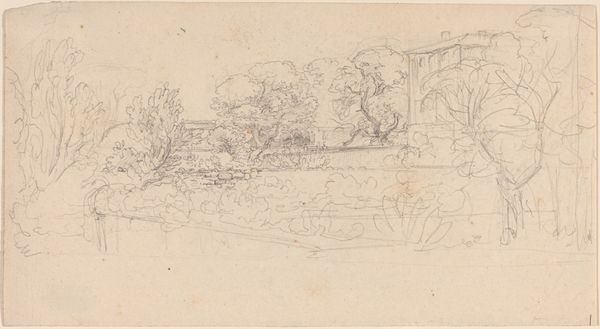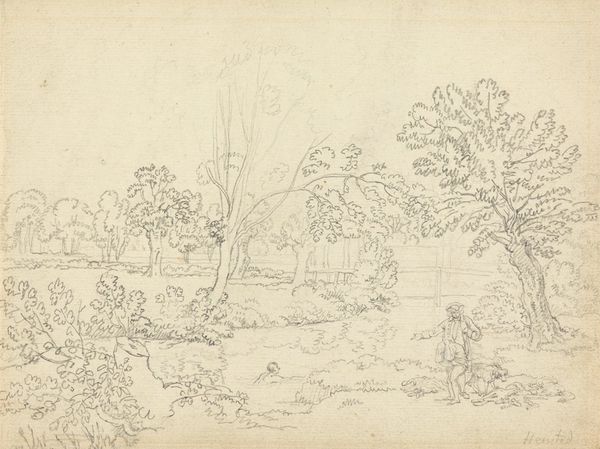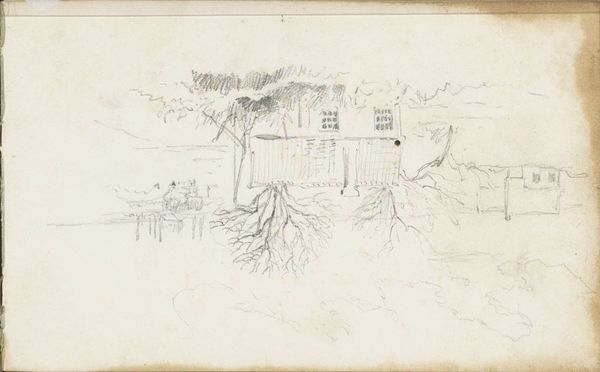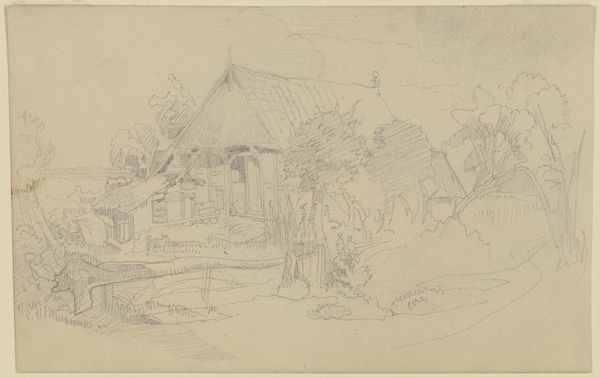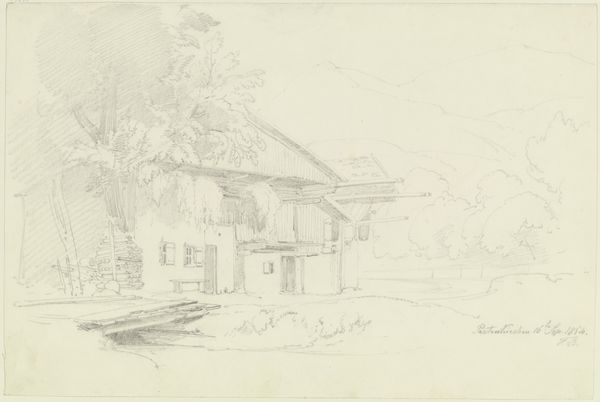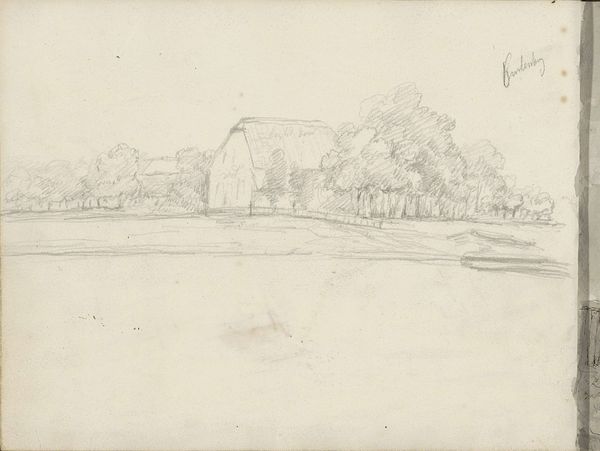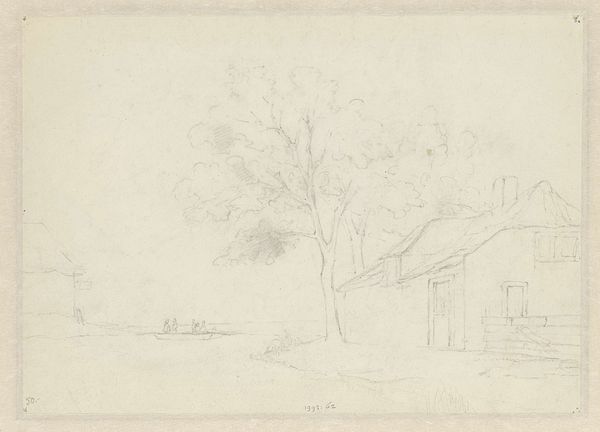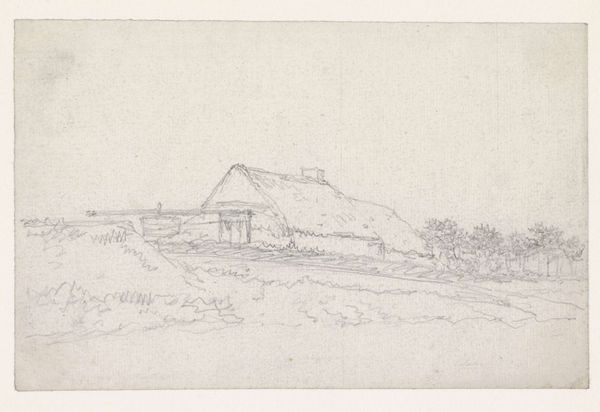
drawing, plein-air, pencil
#
drawing
#
pen sketch
#
plein-air
#
pencil sketch
#
landscape
#
romanticism
#
pencil
#
pencil work
#
realism
Dimensions: height 317 mm, width 406 mm
Copyright: Rijks Museum: Open Domain
Curator: Before us, we have "Boerenwoningen," or "Farmhouses," a pencil drawing created by Henricus Ferdinandus Jongering sometime between 1788 and 1808. It appears to have been created en plein air. Editor: There's such quietude in this scene. The soft pencil lines almost whisper. The overall composition, a modest cottage nestled amongst trees and reflected in water, evokes a deep sense of tranquility. Curator: The application of the pencil, look at the layered strokes, create texture and depth. We must remember that while seemingly simple, drawings like these were crucial in the pre-photography era. They were working documents, recording rural architecture and landscapes and informing a growing awareness of place. Jongering captured it. Editor: Exactly, this transcends a simple depiction. The image is made with a distinct gaze upon rural life. It's vital to remember this was a period of significant social and political change; the rise of Romanticism reflected this intense yearning for a simpler, more "authentic" connection to the land as societies grappled with urbanization. There's a layer of constructed nostalgia present. Curator: You're absolutely right to highlight the element of Romanticism here; though, the realism should not be understated in such field studies. Consider the craft involved; look at how the artist created visual depth in such an atmospheric perspective with very limited tools. Editor: True. But also how such representations played into and were affected by then-dominant social hierarchies and economic exploitation within these agrarian communities and how they still speak to similar conversations today. Curator: Understanding this gives us insights into material access at the time, the very pigments, paper and techniques available shape the narrative of that experience. Editor: The scene evokes a powerful narrative when we acknowledge art history’s links to the larger questions about cultural production. It reminds us to critically examine idyllic imagery that masks the complexities of those laboring landscapes. Curator: Considering both those material processes and the artistic agency help to fully appreciate these delicate details of Boerenwoningen. Editor: Seeing "Boerenwoningen" today invites us to engage with our current ideas about art, representation, and our complicated past.
Comments
No comments
Be the first to comment and join the conversation on the ultimate creative platform.

